Table of Contents
The Yoga 900 is Lenovo’s top-of-the-line consumer ultraportable for the end of 2015 and the first part of 2016. It’s a premium device, selling for $1200 and up at the time of this post (more about this further down, in the Pricing and Availability Section) and bundling a high-resolution touchscreen, powerful Core i5 and i7 Skylake processors, fast SSD storage and a large battery, among others, all tucked inside a thin and light body.
So on a first look, the Yoga 900 is one of the best convertibles you can get these days. But does it actually deliver on what it promises?
I’ve yet to get my hands on a final review unit, but in order to shed some light on that question and since the Yoga 900 is already shipping in the US, I’ve gathered in this post the impressions shared by those who already own one of these Yogas and posted their opinions online, on various forums and websites.
This article is not a replacement of my actual Lenovo Yoga 900 review, but will explain what to expect from this unit and what’s changed from the older Yoga 3 Pro, until I actually post my in-depth analysis.
Update: You should definitely check out this post as well, which includes one of reader’s impressions on the Lenovo Yoga 900 and the HP Spectre x360. He owned them both for a while and in the end decided to keep the Yoga and return the Spectre. You’ll find out why from the post.
The specs sheet
OK, with that out of the way, let’s have a quick look at the specs sheet.
| Lenovo Yoga 900 |
|
| Screen | 13.3 inch, 3200 x 1800 px resolution, 10-finger multi-touch, IPS |
| Processor | Intel Skylake Core i5-6200U CPU or Core i7-6500U |
| Video | Integrated Intel HD 520 HD |
| Memory | 8-16 GB DDR3L 1600 MHz |
| Storage | 256-512 GB SSD (M.2 SATA – Samsung PM871) |
| Connectivity | Wireless AC Intel 8260 , Intel Bluetooth 4.0 |
| Ports | 2x USB 3.0, 1x USB 3.1 Type C, 1x DC-IN with USB 2.0 function, mic/earphone combo, SD card reader |
| Baterry | 66 Wh |
| Operating system | Windows 10 Home/Pro |
| Size | 324 mm or 12.75” (w) x 225 mm or 8.86” (d) x 14.9 mm or .59” (h) |
| Weight | 1.29 kg or 2.84 lbs |
| Extras | watchband hinge, 720p webcam, backlit keyboard |
For the time being Lenovo only sells the Yoga 900 with a Core i7-6500U processor and either 8 GB of RAM and 256 GB of storage space (for $1199) or 16 GB of RAM and a 512 GB SSD (for $1399). As a result, most of available reviews are based on the former configuration.
Design and exterior
On a first glance, the Lenovo Yoga 900 is a close replica of last year’s Lenovo Yoga 3 Pro, with similar design lines and the same watchband hinge that ties the screen and the lower body together.
Even the packaging remains the same, as you can see in this post and is one of the most ingenious I’ve seen from any OEMs: the laptop is covered by two paper flaps, which actually lift the device out of the box once you pop-them aside, so you can easily grab it. I know that’s a minuscule detail, as you’re only going to take the laptop out of the box once, but I feel this little gimmick will make a great first impression.
Anyway, once you start using the notebook, you’ll notice there are quite a few things setting the Yoga 900 and the Yoga 3 Pro aside, but mostly only if you used the Yoga 3 Pro before, cause most of the changes are subtle.
First of all, the Yoga 900 is a bit thicker (14.9 mm vs 12.8 mm) and heavier (1.29 kg vs 1.19 kg), but has a millimetrically smaller footprint ( 324 x 225 mm vs 330 x 228 mm). Potential buyers will probably notice the increased weight in daily use, but even so the new Yoga remains lighter than most of the other 13-inch convertibles. The HP Spectre x360 for instance, which is its main rival, weighs 3.25 lbs, but is a bit shorter, as you can see from our detailed review and this comparison of the two.
Size aside, the Yoga 900 is well built and feels comfortable to grab and hold in your hands. The exterior is metallic and available in three different colors: Champagne Gold, Platinum Silver and Clementine Orange. You probably noticed the Yoga logo which is now prominent on the hood, perhaps in an effort to make the Yoga brand more memorable and set it apart from the other Lenovo notebooks.
The watchband hinge is made from several hundred different pieces and is solid built, keeps the screen sturdily in place and allows for smooth transition between the 4 different modes you can use this laptop in: Notebook, Stand, Tend and Tablet. Lenovo are saying it has been redesigned from the older model and some reviews claim it’s both more rigid and not as noisy as on the Y3P, which might mean it doesn’t rattle as annoyingly. We’ll see.
As a tablet, the Yoga 900 is still large and heavy enough that you won’t be able to hold it for long before feeling fatigue in your arms. The large bottom bezel is particularly annoying, especially for someone coming from a compact 13-incher like the Dell XPS 13 like myself, but it wouldn’t be fair to compare the two anyway, since one is a hybrid and the other is not. Still, I wish Lenovo were able to reduce the Yoga 900’s footprint more. Hopefully in the next iteration.
As a side note though, its’ worth noting that the Yoga 900 is slim as a tablet, as the screen folds flat on the back of the laptop. I’m pretty sure magnets are used to keep the two halves tied together in Tablet mode, which is definitely a positive.
In Tent, Stand and Tablet modes the keyboard and trackpad are automatically deactivated, so they won’t register accidental commands. It’s also worth noting that Lenovo designed slim rubberized edges around the screen and the interior, which act as a bumper and provide both protection and grip.
Now, the large screen also translates in a large interior, which leaves room for a proper keyboard and a roomy palm-rest. We’ll focus on the former now and talk about the keyboard further down. The interior is covered in a soft plastic, with a smoother texture than on the older Yoga 3 Pro and without any annoying stickers.
Buyers report it feels nice to the touch, offers good grip and won’t show smudges as easily as other dark finishes (but you’ll still have to wipe it clean quite often). I’ve yet to read anything about the edges, where the smooth interior meets the sides, an aspects I wasn’t very happy with on the previous Yoga, but the fact that nobody’s complaining is probably a good sign.
Let turn our attention to the IO. On the right side there’s the DC-IN port that also acts as an USB 2.0 slot, an USB 3.0 slot, the card-reader and an USB Type-C port, which replaced the micro-HDMI connector found on the Yoga 3 Pro. This is not a Thunderbolt 3 port from what I can tell, but will support video and data output with the right adapters. The laptop cannot charge via the USB Type C port and I can’t tell for sure whether the port can be used to charge external devices or not, but I’m inclined to say it can’t, since that feature is already reserved for the USB slot on the other side.
On the right there’s that other USB 3.0 slot mentioned above, which can be used to charge external devices, the headphone/microphone jack, a Screen Lock, the OneKey Recovery and the Power buttons. There’s no longer a physical volume rocker here, which means adjusting volume while using the device as a tablet is going to be more difficult, as you’d have to rely on the touch control options integrated within Windows 10. In Laptop mode you can still use the keyboard to adjust volume, so that’s not a big issue.
Ok, as we draw the line on this chapter, the Yoga 900 is not a majorly redesigned machine, but Lenovo sure tweaked a few aspects on the newer model, addressing the footprint, exterior design, internal layout and the IO on the sides. Overall I’m happy with these changes and don’t mind the thicker and heavier body, considering what that translates into, as you’ll see further down, but I would have been thrilled if they could have made the device more compact.
Keyboard and trackpad
There are a few things to notice here. First of all, the keyboard now sits higher on the frame, which translates in a larger palm-rest. That’s a welcomed change, however the most important novelty is the addition of the 6th row of Function keys.
Besides this, the key’s have been slightly revamped from the Yoga 3 Pro, as the two tone (translucent and black) design has been replaced with a simpler solid-black one. This takes a hit on both the appeal and the functionality, as the new keys are more difficult to spot in dark-conditions, despite being backlit. And BTW, users can choose between two intensity levels for the backlightning now.
I can’t share much about the typing experience though, as I’ve read mixed opinions. Some claim the keyboard is a bit too flat and mushy, some say it types really well. From the hands-on videos I think the truth is somewhere in the middle, with the keys looking a bit soft, but it’s impossible to tell you more without actually getting dirty with the keyboard.
Keep in mind the Yoga 3 Pro was not one of my favorite devices to type on, so I sure hope Lenovo changed things in the right way here.
Moving on to the trackpad, it seems identical to the one on the Yoga 3 Pro, but with a different framing. It’s a Synaptics Surface, but is not certified as a Windows Precision Touchpad, mostly because it is too small to meet the size criteria (90 x 60 mm). Still, the touchpad on the Y3P was one of the better I’ve ever tested on a PC, so I’d expect this one to perform well too. In fact, the existing reviews claim the touchpad is responsive and highly configurable from the Synpatics app, so it might be actually quite good.
I did notice a few complaints about the Y3P’s touchpad on Windows 10, that’s why I can’t tell for sure what to expect here, but my money are on an overall good experience, with some occasional glitches.
Screen
The Yoga 900 inherits the 3200 x 1800 px display from the Y3P, with its IPS Pentile matrix (model: Samsung SDC434A), roughly 300 nits of maximum brightness and surprisingly accurate colors for a Pentile panel. The contrast is a bit poor at around 300:1, as the blacks are more on the grayish side, especially at high brightness levels, but overall this screen is definitely not bad.
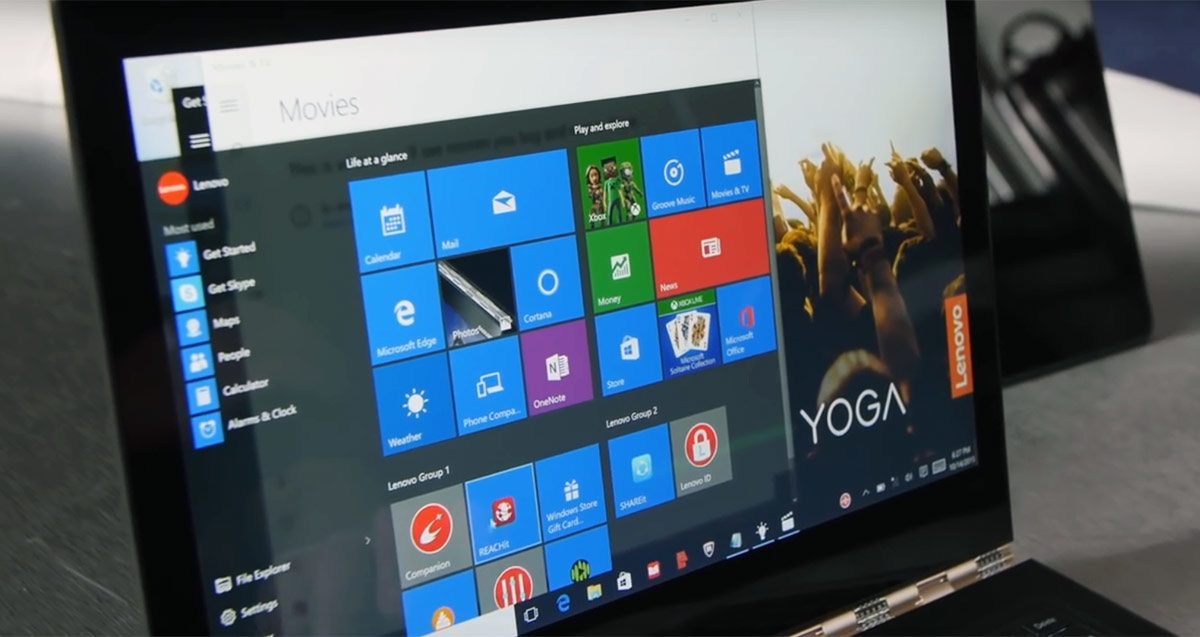
The screen is pretty good, but an IGZO panel or Activi Digitizer support would have been appreciated
Of course, I would have been happier to see an IGZO panel on the new Yoga, or some sort of Active Digitizer and pen-support, especially when some of the competitors offer at least one of these modern features. Lenovo choose to go the simple route here though, and that might come back and bite them in the arse with some potential buyers.
These aside, you might have noticed that Lenovo covered the entire display with Gorilla Glass now, so those unappealing plastic parts on the bezel are gone. On top of that, the sturdier hinge makes the screen stiffer when touching and swiping it, but there is one aspect I’m a bit concerned of and I’ve yet to find it it has been addressed on the Yoga 900 or not: the display ensemble was rather fragile on the older Yoga and pressing on the lid-cover caused warps in the panel, so I hope the new model is stronger built.
Hardware, performance and everyday use
The Yoga 900 bundles Intel Core i5 and i7 Skylake processors and performance wise, it’s a significant upgrade from the Core M powered Yoga 3 Pro. The faster CPUs help with boot-up times, loading times and especially with everyday multitasking and some demanding chores. For instance, light video and photo editing on the go are now a possibility, alongside daily activities like browsing with 10+ tabs open, editing Office documents, listening to music etc.
The graphics are greatly improved as well, as the Intel HD 520 chip integrated withing the Skylake processors is miles ahead of the Intel HD 5300 chip in the Broadwell Core M platform, allowing smooth multimedia playing and even some light gaming. The addition of Direct X12 support or the dedicated video hardware decoder greatly help as well with the multimedia experience. Speaking of that, the Yoga 900 gets a set of stereo speakers placed on the bottom, with redesigned grills. The speakers on the older model were loud and fairly crisp, so I’d expect to ones o the Yoga 900 to perform alright as well.
The Skylake platform is paired with up to 16 GB of DDR3L memory and up to 512 GB of SSD storage. The RAM is soldered on the motherboard from what I can tell, and not upgradeable, but the storage is. You’ll have to take apart the entire underbelly to acccess the internals, but that’s shouldn’t be very hard with the right screwdriver.
Reviewers report the Yoga 900 ship with Samsung PM871 SSDs, which are M.2 SATA 80 mm sticks. I’ve yet to find any reports on PCIe M.2 SSDs working on the Yoga 900, so we’ll have to try and find out if those are compatible or not. Still, it would have been nice to see PCIe storage included by default on the Yoga 900 in this day and age.
As we wrap-up on performance, you should know that reviewers are still complaining about he amount of software preinstalled on this machine out of the box, but except for the Office and Antivirus Trails, most of the bloatware is made of Lenovo programs that some might actually find useful (better explained in this article).
Temperatures and Noise
A laptop’s performance is closely tied to thermals, acoustics and battery life. All the early reviews claim the Yoga 900 can be used on the lap and doesn’t get hot with daily use. I have to admit I’m a bit skeptic here, as there are no intake grills on the belly and all the cooling is performed through the small grills behind the hinge, so take this with a grain of salt.
Keep in mind that the Skylake platform is fan cooled, so noise can be an issue as well, and finding the right balance between a quiet fan and a cool body is never easy. I’ve read about a redesigned fan with a new type of blades, but I’ve yet to find any detailed reports on noise or temperatures, so we’ll have to leave this questions unanswered for the time being and come back with an update later on.
Battery Life
The Lenovo Yoga 900 bundles a 66 Wh battery, larger than any of the other premium 13-inchers have to offer these days, so I’m pretty sure it can’t disappoint when it comes to battery life.
Lenovo claims their laptop can go for 9 hours on a charge, while looping a 720p clip at 200 nits. Early reviews mention it can only go for around 7 hours in similar conditions, which is a bit short for a 66 Wh battery, but in my experience I’d reckon video-playing benchmarks are highly dependent on both the files played and the movie-playing app. On top of that, a 200 nits screen would be too bright anyway for indoor use, so I’d expect the laptop to last longer when lowering brightness to around 120 nits, which is the reference in my battery life tests.
Regardless, expect the Yoga 900 to go for anywhere between 5 to 10 hours on a charge while performing various activities. The high-resolution touchscreen takes its toll on battery life, but the increased battery capacity actually compensates and should allow this Yoga to outlast its convertible rivals.
As a side note, the Yoga 900 is bundled with a 65 Wh power brick and a full charge takes around 2 hours and 30 minutes. The Yoga 3 Pro came with a smaller 40 Wh brick and its 44 Wh battery charged quicker (of course).
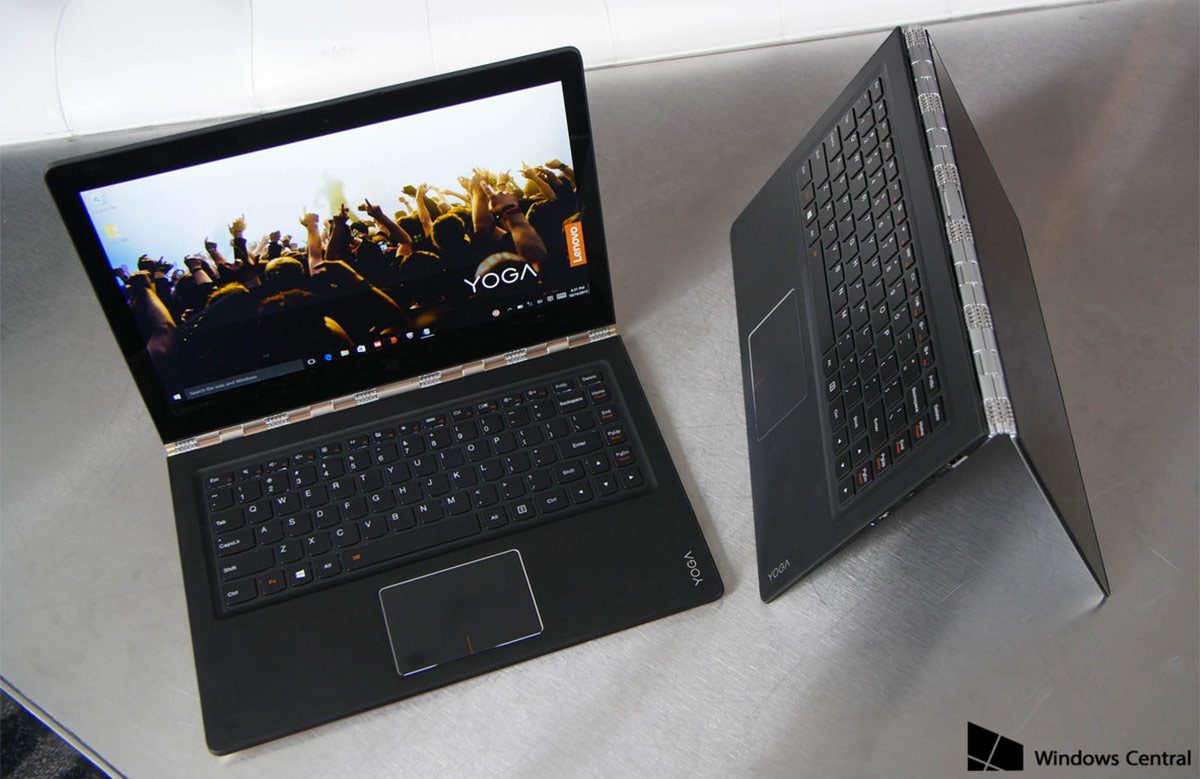
Thermal/Acoustic performance and battery life are some of the questions still unanswered when it comes to the Yoga 900
Price and availability
The Lenovo Yoga 900 is already available in stores in the US, on Lenovo’s website and at BestBuy. Other shops will sell it as well in the weeks and months to come.
The Core i7-6500U configuration with 8 GB of RAM and 256 GB of SSD storage is the base model buyers can get at the time of this post, selling for $1199. A higher end model with the same processor, but 8 GB of RAM and 512 GB SSD sells for $1299, while the configuration with 16 GB of RAM and a 512 GB SSD goes for $1399. These are fair prices for what you’re getting.
Core i5 models will be released in the near future and I’d expect a Core i5-6200U model with 8 GB of RAM and 256 GB SSD to sell for either $999 or $1099. This is the configuration I’d advise most users to aim for, as it provides the best balance between speed, battery life and acquisition costs.
Competition and conclusions
While there are still a few questions unanswered for the time being, I feel Lenovo did a great job with this Yoga 900 and majorly improved their previous Yoga 3 Pro. In fact, I feel this is the only proper alternative to the HP Spectre x360, a device that reigned unchallenged in the premium 13-inch convertibles segment for the last months and a device we already reviewed in depth here.
Update: You should definitely check out this post as well, which includes one of reader’s impressions on the Lenovo Yoga 900 and the HP Spectre x360. He owned them both for a while and in the end decided to keep the Yoga and return the Spectre. You’ll find out why from the post.
In comparison, the Yoga 900 is thinner, lighter by about 0.4 lbs and packs a larger 66 Wh battery (compared to the 55 Wh one of the HP). The Yoga is also available in a few different colors and will be the first option for those who don’t appreciate the Silver or Dark metallic look of the Spectre.
On the other hand, we do know that the HP types really well, provides a high-resolution display with an RGB matrix and Active Digitizer and performs quietly and cool. If the Yoga manages to match it in these fields, or even come very close, it’s going to be a solid pick for many of potential buyers, especially since it is more affordable spec for spec. The Core i7-6500U Spectre X360 with 8 GB of RAM, 512 GB SSD and the 2560 x 1440 px display sells for $1300, which is about $100 more than the Yoga.
However, the Spectre actually starts at $999 with a Core i5 processor 8 GB of RAM and 128 GB of SSD storage, so those who only have around $1000 to spend will favorite it, at least till the Core i5 Yoga versions get in stores.
At the end of the day, the Lenovo Yoga 900 is one of the best 13-inch hybrids available right now and has an excellent price. Stay close for our detailed review in the weeks to come and get in touch in the comments section if you have anything to add to the post or any questions about this device, I’m around and will help out if possible.
Sources: (like 1, 2, 3 , 4 or 5).

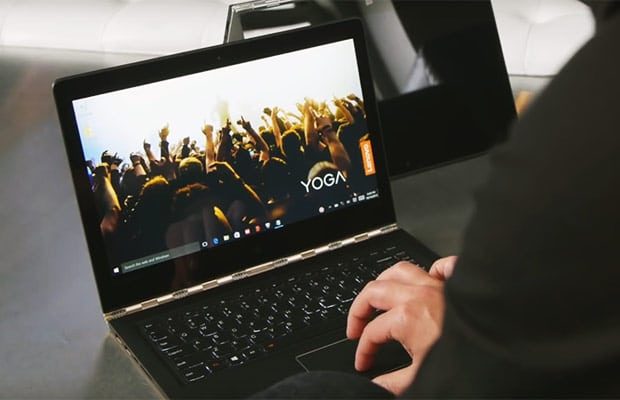
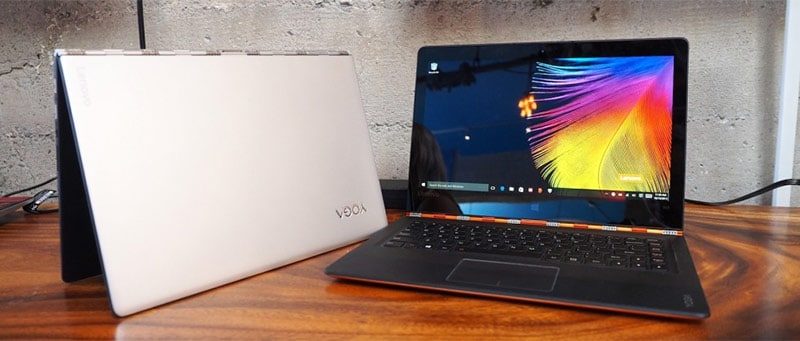
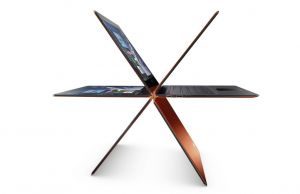
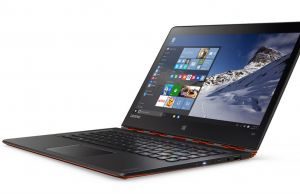
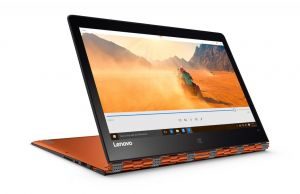
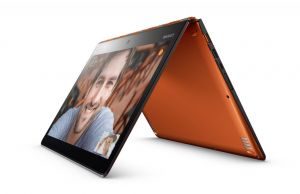
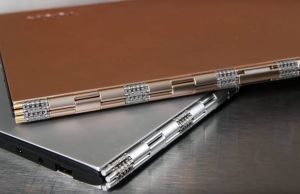
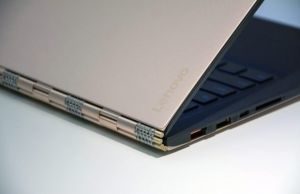
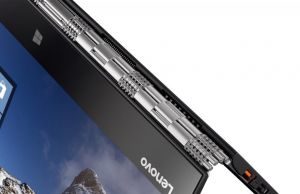
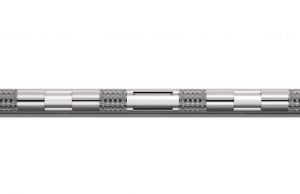
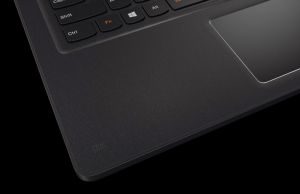
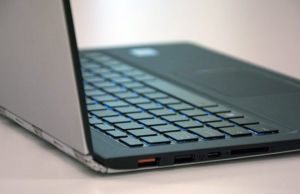
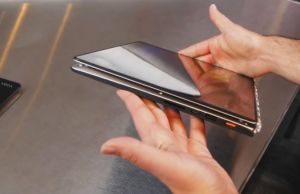
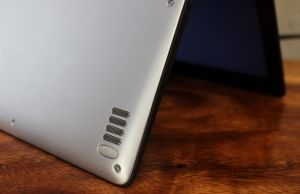
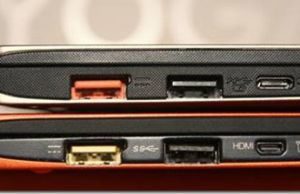
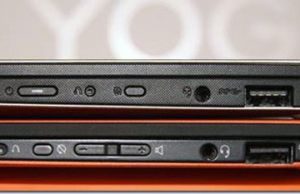
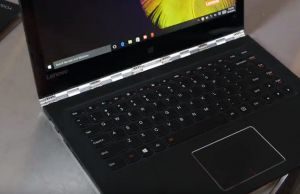
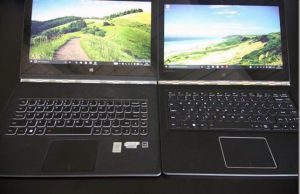
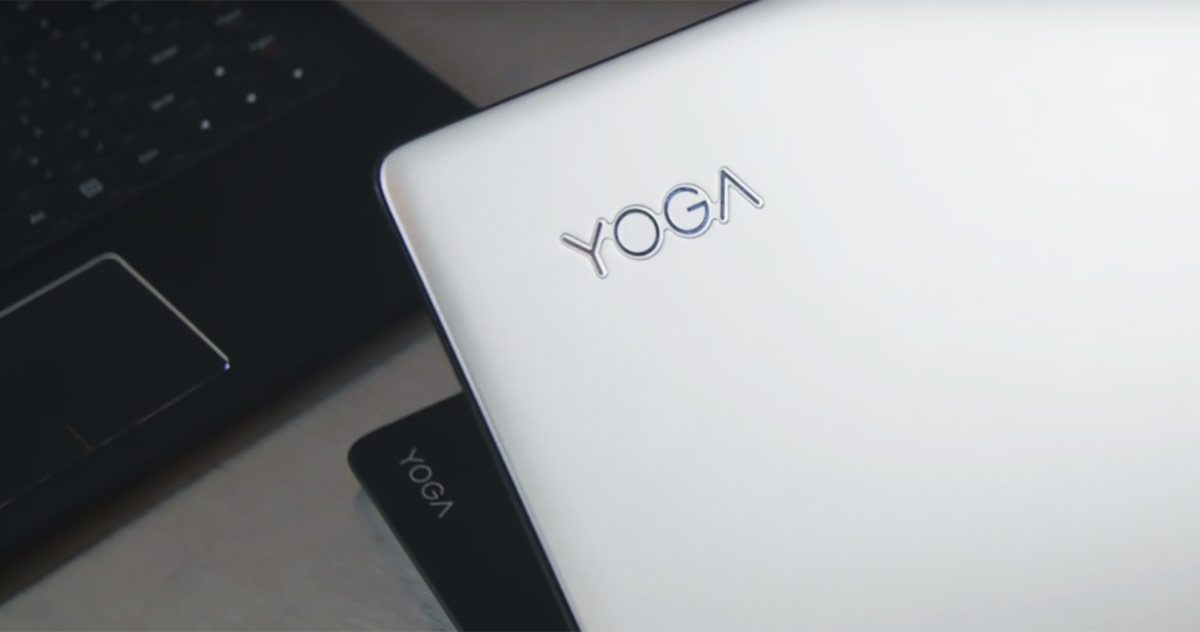

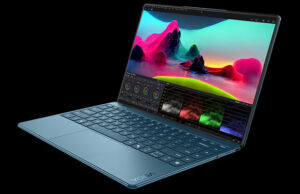
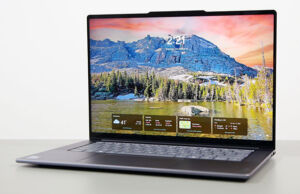
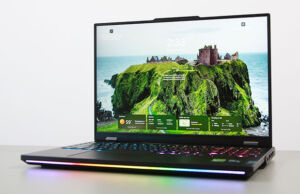

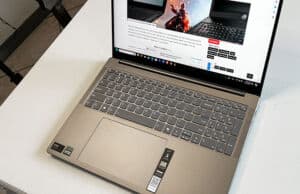
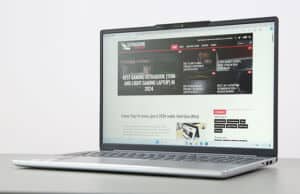




Zorrobyte
October 27, 2015 at 2:46 pm
What’s the point if there is no pen?
Nobbly
October 27, 2015 at 6:37 pm
I don’t think the integrated graphics spec is right, the skylakes use the 520 rather than the 5500
Brent
November 16, 2015 at 8:38 pm
Lenovo is running an online sale of $100 off the high-end 900. While I was lingering on the Lenovo web site, a popup offered to send me a coupon for further discount as a first-time buyer, which was for $50 on a purchase over $1,000. So I ordered the 900 with 16GB RAM and 512GB SSD for $1,249, plus sales tax, free shipping. I ordered orange,and the expected ship date is three weeks.
Xav
April 24, 2016 at 12:04 am
Did you just write a review on a product your never even touched once?
alex
August 11, 2016 at 9:42 am
The screen on mine broke really quickly and Lenovo Singapore have been unbelievably unhelpful regarding whether it can be fixed. Terrible customer service.